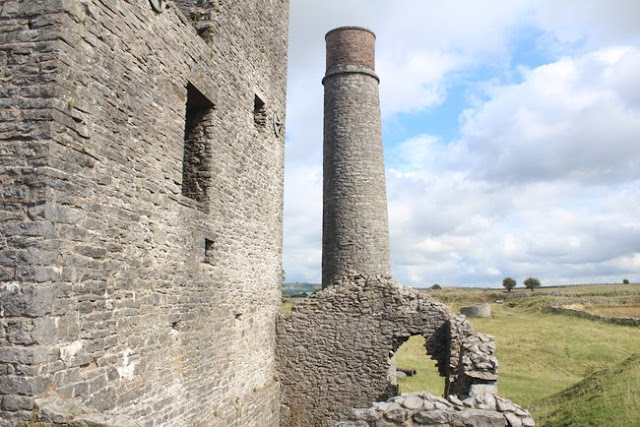A short walk around the Magpie Mine site, Sheldon near Bakewell
Magpie Mine near Bakewell is said to be one of the best preserved 19th Century mines in the UK. It is not an easy place to get to by public transport. The nearest railway stations are Buxton, Grindleford or Matlock, all around 10 miles or more away. I cycled from Grindleford, though this was hard work on a warm and humid day. After my visit I chose to travel back via Matlock to avoid some hill climbs. Most people will arrive at Magpie Mine by car. There is a layby on Grin Low to the south of the site from where it can be accessed on foot.
Lead mining in the area is likely to have gone back hundreds of years. Satellite images show the area pockmarked with what look like early Bell Pits that were simple holes in the ground, when they were dug out to an extent that they might collapse a new hole was dug nearby, the spoil tipped from the new pit tipped in to the abandoned shaft. A cross section of the pit would have had a bell shape, hence the name. These appear as clusters of dips in the ground as the spoil in the filled in shafts settles.
The later 19th Century mine featured a Cornish style pumping engine to clear water from the workings. Before steam winding engines were used to extract the ore it would have been brought to the surface using Horse Gins and a replica of one has been constructed on the site. The site has two chimneys and two engine houses from the winding engine and the pumping engine. The engine houses date to 1869 when earlier engines were replaced, though they were connected to the chimneys built for the original engine houses in 1840. Between the two engine houses is a pit headgear and tin huts, this is from the final phase of the mine around 1950. A former trawler engine was housed in the tin hut to wind the cage that can be seen at the top of the shaft.
The Magpie Mine site is managed by the Peak District Mines Historical Society and more information about the site can be found on their website.
Below - Arriving from the footpath from Grin Low the first building seen is the Agent's House. Adjoining it is the single story Smithy built to maintain the mine's equipment. It is now used as a visitor centre when volunteers are on-site for occasional events such as group visits and heritage open days.































No comments:
Post a Comment